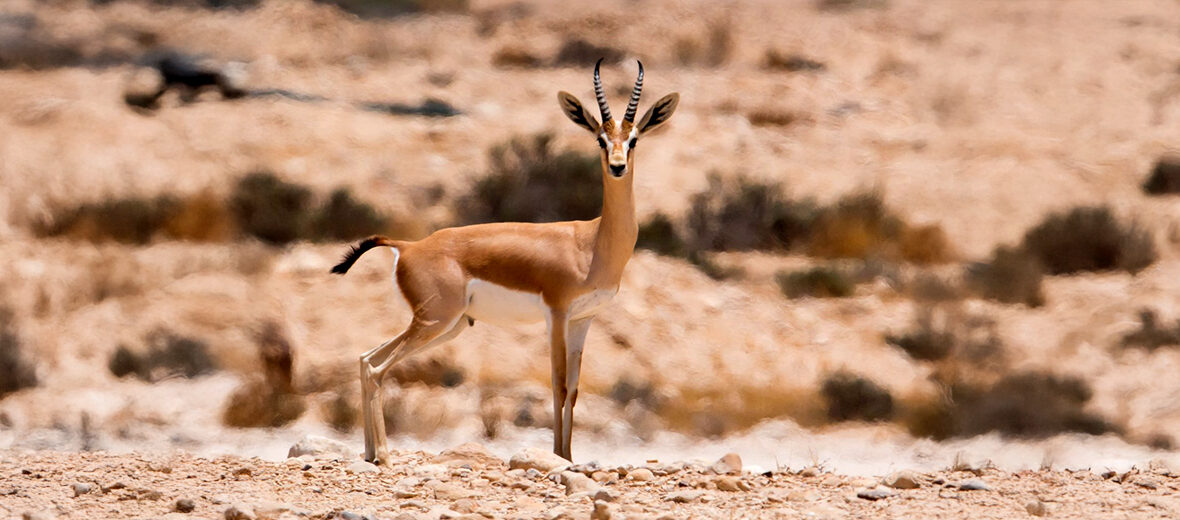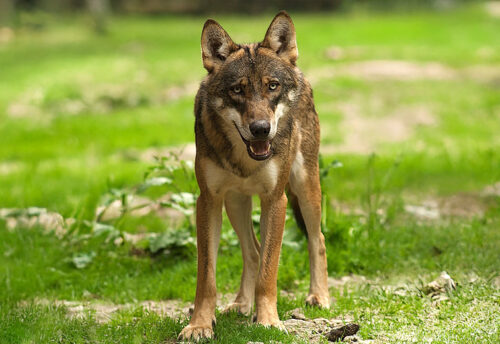
The dorcas gazelle, aka ariel gazelle, is a common but diminutive species of gazelle found in the mountain desert and in semidesert climates of Africa and Arabia. They face the threats of habitat loss and destruction at the hands of farming and ranching; hunting, for their meat, coats, and horns; trapping, for sale in the exotic pet trade; and climate change, that causes crippling droughts. The IUCN lists these critters as Vulnerable. Their population trend is listed as decreasing.
First the Stats…
Scientific name: Gazella dorcas
Weight: Up to 44 lbs.
Length: Up to 3.5 feet
Height: Up to 2.1 feet, at the shoulders
Lifespan: Up to 12.5+ years
Now on to the Facts!
1.) Their scientific name hails from Ancient Greek δορκάς (dorkas), which refers to a roe deer, gazelle, or antelope.
2.) They were first described by Swedish zoologist Carl Linnaeus in the 10th edition of Systema Naturae in 1758.
3.) There are 6 subspecies described: Eritrean, Egyptian, Isabelle, Moroccan, Saharan, and Pelzeln’s.
4.) These critters are similar in appearance to, yet more diminutive than, the closely related mountain gazelle.
5.) Their long horns bow outwards then turn inwards and forwards at the tips.
But wait, there’s more on the dorcas gazelle!
6.) Standing water is not often consumed due to their ability to obtain moisture from the plants, like succulents, that they eat. But they do need to eventually drink standing water.
7.) They are both crepuscular (active at dawn and dusk) and nocturnal (active at night).
Did you know…?
There are an estimated 40,000 existing in the wild, to date.
8.) Flowers, leaves, and the pods of many species of acacia trees, as well as the leaves, twigs, and fruits of various desert bushes are all on the menu.
9.) Like all gazelles, they are fast, able to run up to 60 mph!
10.) Females undergo up to a 6 month gestation (pregnancy) that yields a single fawn.
But wait, there’s still more on the dorcas gazelle!
11.) Fawns are born mostly precocial (fully developed), complete with fur and open eyes. They are able to stand and walk within 2 hours of birth.
12.) Fawns have very little, if any scent at all. This is an evolutionary defense mechanism that aids in the prevention of predation.
Did you know…?
Some dorcas gazelles are have been known for their dangerous response when surrounded. There have been numerous reports of deaths involving being gored.
13.) Arabian wolves, cheetahs, leopards, lions, servals, caracals, and humans all prey on these critters.
14.) Their biggest threat is ever-expanding human civilization, which shrinks their habitat due to conversion to farmland, and by introducing new flocks of domestic sheep and goats which can outcompete with these gazelles for grassland.
15.) The pelts and horns are traded in Morocco for decorative and medicinal reasons, where they are the most commonly seen ungulate in markets, despite their protected status under Moroccan law.
Now a Short Dorcas Gazelle Video!
Be sure to share & comment below! Also, check out the Critter Science YouTube channel. Videos added regularly!

Want to suggest a critter for me to write about? Let me know here.
Some source material acquired from: Wikipedia & IUCN
Photo credit: Mino Zig



